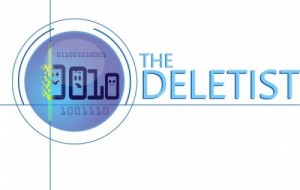Last month Google launched Google Workspace. In essence, Google rebranded existing products to make them more collaborative and added some new features.
I haven’t tried Google Workspace yet. On the surface, it promises to resolve a lot of common workplace challenges. This is especially true when many of us work and socialize remotely, from a distance. Based on my understanding, users can now integrate content from many different Google products. This will enable users to work seamlessly across chat, gmail, meet (aka video calling), drive, and documents. It’s innovative and modern.
The Records and Information Management Perspective
Products like Google Workspace show enormous potential to improve how we work in today’s world. Common trends are for people (aka users) to work remotely (or on the go) and collaboratively. People also use a variety of apps to communicate with one another. Examples include chat or text messaging, social media, email (including attachments), web-based apps like Drive, Dropbox, Slack, Office 365, etc.
Google Workspace aims to let users work seamlessly across (Google) products. From a records and information management (RIM) perspective, this usually amounts to a large mess. Initially, users love the convenience and ease with which they can get going. Project work is accomplished collaboratively, in real time. Users can edit one document simultaneously and see who is making which changes.
I personally love the online collaborative editing. It’s much cleaner than having each person edit their own copy which some poor soul has to aggregate into one version later.
However, all this working across multiple products and channels can get out of control very quickly. This is especially true when guidelines, rules, and best practices haven’t been established first. Users jump right in, adding documents, chatting, having meetings, sharing, collaborating, and working. It all seems to work great, in the beginning. Where it usually falls apart is when users need to find something from a previous project. Or locate a specific version of a document. Or piece together fragmented discussions over emails, chats, video calling, comments to determine how a decision was made.
The amount of storage available with Google Workspace plans irks me, both as a RIM professional and The Deletist. The basic plan offers 30GB of storage. Other plans offer storage in TB, per user! With so much storage, nobody would even consider deleting useless content.
The solution – hire an information professional to maximize the potential.

1 comment for “The new Google Workspace: Productivity Booster or License to be Messy”